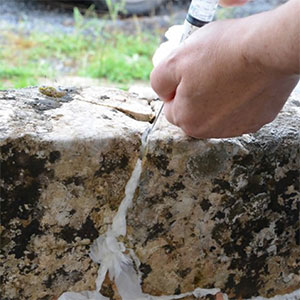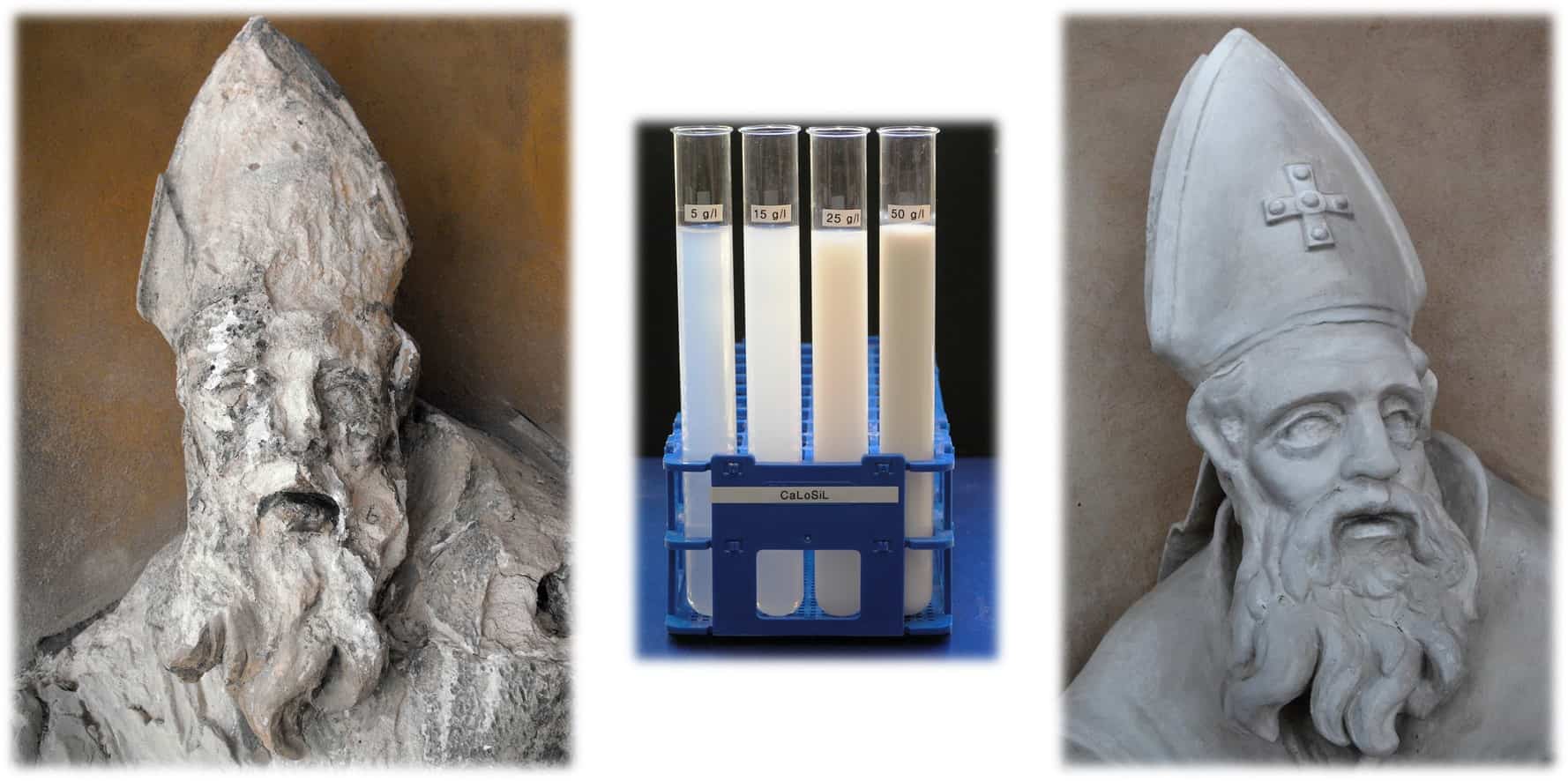Description
Toolbox of Compatible Materials for the Conservation of Stone, Mortar and Plaster
CaLoSiL® – Structural Conservation & Consolidation of StoneNanolime │ Alcohols │ Conservation of Stone CaLoSiL® is a ready to use stone consolidator, which contains calcium hydroxide nano-particles stably dispersed in different alcohols. The particle sizes range from 50 to 250 nm, which guarantees good penetration, even in materials with low porosity. Solid calcium hydroxide layers are formed after evaporation of the alcohols. These convert into calcium carbonate by reaction with atmospheric carbon dioxide. |
 |
 |
CaLoXiL® – Products for Surface Treatment and Filling
|
CaSoPaL®Nano Lime │ Mold Removal │ Lime Paint │ Chlorine Free The occurrence of mold is an increasing problem which affects the health of millions of people. The visible infestation often represents only a fraction of the infected areas. The CaSoPaL® anti-mold system offers an ecological and safe control - without the use of chlorine or other highly toxic biocides. |
 |
 |
SioXaL® - Consolidation of sandy and Deconsolidated SurfacesSilicon Dioxide Particles │ Anionic Silica Sol │ Stone Consolidation Our SioXaL products are a colloidal dispersion of fine silicon dioxide particle in water. These anionic silica sols are used for stone, mortar and plaster consolidation by undergoing a sol-gel-reaction. All products are slightly alkalic, opal, homogenous solutions. |
Desalination CompressCapillary Active │ Close to the Surface │ Cement & Lime Free Salts find its way into the masonry either by the material itself or by chemical or biochemical reactions of the material with the surrounding. However, those salts are not necessarily damaging the stone. With climatic changes the salinity becomes visible. These can result in efflorescence, damp stains or, in the worst-case, damage to the stone. If the salts accumulated close to the surface area a desalination is reasonable and should take place before the restoration. In some cases, consolidation of the sensitive area has to be performed before the desalination, to minimize the loss of material. The depth profile of the salt should be analytical determined to report the success of the application. |
 |







